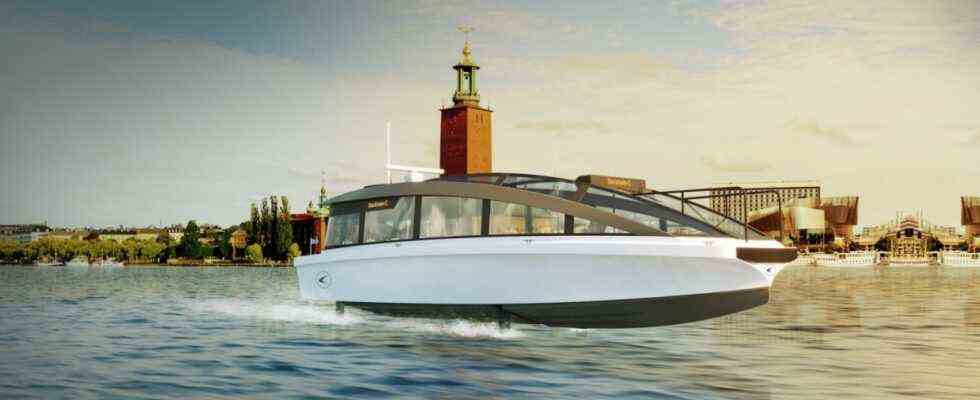While the steamers continue to blow clouds of soot into the sky on many German inland waters, electric ferries have been in use in Norway for a long time: The Future of the Fjords was one of the first passenger ships in 2018 with a large battery pack of 1.8 megawatt hours (MWh). The popular carbon fiber catamaran, which can carry up to 400 passengers, has now had two sister ships that are also sailing in the narrow Nærøyfjord.
A special solution for megawatt charging makes the almost silent gliding through the fjords possible. The boat tour from Flåm to Gudvangen takes around two hours, the E-radius is not much larger. Although they have about 40 times the battery capacity of a typical electric car on board, the catamarans only travel about 30 nautical miles (56 kilometers). A floating “PowerDock” was set up in the port of Gudvangen so that they are ready for use again in 20 minutes. The 2.4 MWh intermediate storage facility is continuously supplied with green electricity without overloading the local grid.
The solution is similar to the planned megawatt chargers for trucks on the motorways, and the output of the ship’s engines is roughly comparable with 450 kW each (however, two such engines are used in the ferries). With larger ships and loads, however, the battery storage systems quickly reach their limits. “A typical container ship would need the energy content of 10,000 Tesla S85 batteries,” it says in one study the International Chamber of Shipping (ICS), “every single day.”
According to the ICS, the energy that an average container ship needs would be enough to supply 50,000 houses with electricity and heat. If all 50,000 ocean-going ships worldwide were to be converted to climate-neutral energy sources such as ammonia (as a liquid hydrogen base), according to the ICS, 750 gigawatts of renewable energy would be required every year – more than a third of the amount produced worldwide today. “Green” fuels are also needed for air traffic, which has a bigger problem with bulky energy storage devices – and is also responsible for two percent of global greenhouse gas emissions.
Cities in over 50 countries want to test the innovative flight ferries
In both aviation and shipping, the drive turnaround is mostly still limited to local pilot projects. A research project headed by the Fraunhofer Institute IGP now aims to “move city traffic from the street to the water”. Together with 14 project partners, mainly from the engine and boat building sector, emission-free urban mobility solutions on the water are to be promoted. “Increasing urbanization and individual traffic lead to overcrowded streets in urban areas. We want to counter this trend by integrating waterways,” explains Jan Sender from Fraunhofer IGP. In order to reduce pollutant and noise emissions, not only electric drives, but also modern lightweight constructions and wing solutions (foils) to reduce travel resistance should be tested.
The Swedish e-boat pioneer Candela is already successful with its wing technology. In the middle of the year after next, a corresponding water taxi should start operating the ferry in the archipelago off Stockholm. The ferry companies use around 60 diesel-powered boats there today to transport up to 60 commuters and tourists to the city and the islands on a schedule. But the environmental problems are the same as with all diesel ships – the boats are noisy and smelly, not to mention the high energy consumption.
The solution could be so-called hydrofoils, which significantly reduce the water resistance and significantly increase the speed of travel: from around 18 knots (30 km / h) the hull is lifted out of the wet and glides on wings that remain just below the surface. According to the manufacturer, this reduces energy consumption by more than 90 percent compared to conventional motor boats.
The ferry operators in the Swedish capital have calculated that this will reduce operating costs by 42 percent. The travel time from the city to the suburb of Ekerö is to be reduced from 55 to 25 minutes. This enables closer, environmentally friendly connections to the surrounding area. Candela claims to be in talks with cities in over 50 countries to revolutionize ferry traffic there.

